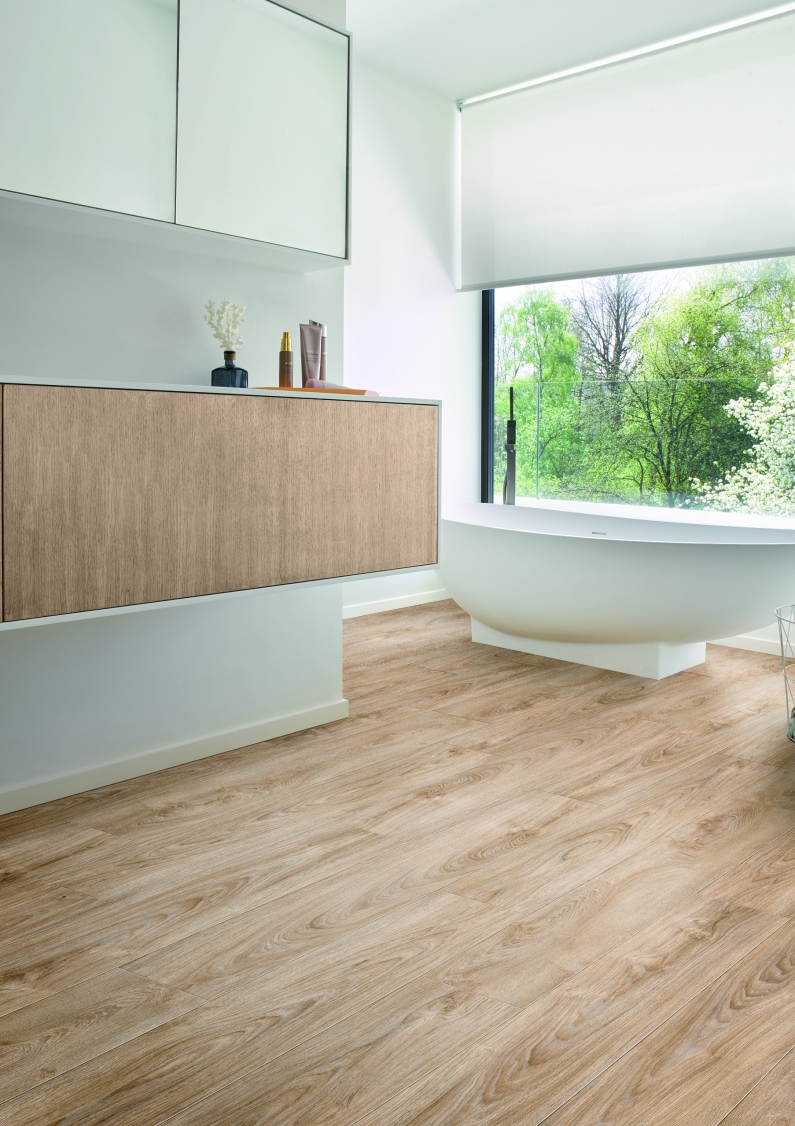Recent Changes to E3 Acceptable Solutions
Due to the recent changes to Acceptable Solution E3/AS1, for Clause E3 (Internal Moisture) of the New Zealand Building Code the compliance path for vinyl planking and vinyl tile flooring has changed. This is largely due to the reclassification of dishwashers and washing machines as ‘Sanitary Appliances’ and basins and sinks as ‘Sanitary Fixtures’ and the requirement to contain water from accidental overflow, and protect from regular water splash.
Clause E3.2 reads ‘building must be constructed to avoid the likelihood of-
- Fungal growth or the accumulation of contaminants on linings and other building elements; and
- Free water overflow penetrating to an adjoining household unit; and
- Damage to building elements being caused by the presence of moisture’
As vinyl planking is not a single impervious sheet, instead a floorcovering made of individual impervious pieces we must demonstrate that moisture- either from accidental overflow, or repeated watersplash will not harbour fungal growth or cause damage to building elements or adjoining household units.
The Accepted Solution for floorcoverings in a kitchen, laundry, bathroom or toilet is a waterproof sheet material with welded seams and sealed or coved edges; this floor covering must be impervious and easily cleaned.
The affected area extends to the doorway and walls at the perimeter of the room, or a minimum of 1.5m from all sanitary fixtures and sanitary appliances in open plan rooms. Now, careful consideration is required when determining the position of dishwashers and sinks in open plan kitchen and living spaces, as the changes to E3/AS1 may mean hard flooring is required on the reverse side of an island unit to achieve the 1.5m impervious flooring requirement.
Changes to the Acceptable Solution do not mean that other flooring products, such as vinyl planks cannot be used in projects requiring a building consent- only that the compliance path has changed. The applicant must now prove that the material they wish to install meets the functional criteria of the Building Code and this evidence forms an Alternative Solution. There are several items that may be provided as evidence to form an Alternative Solution, for more guidance on this please visit the MBIE (Ministry of Business, Innovation and Employment) website https://www.mbie.govt.nz/ these items could include:
- Comparison with a product Accepted by a Building Consent Authority- documents may have been previously accepted by a Building Consent Authority
- Trade Literature- the manufacturers literature may contain technical data that supports the proposal
- In-Service history- proof the proposed material has been used in a similar application on a similar site
- Expert evidence- collaborative expert support for the proposal
-Build Magazine 2007, Des Molloy (former BRANZ Presenter and Technical Writer for 2007 article)
At Robert Malcolm we would like to assist with gaining the necessary approvals from your local Building Consent Authority by supplying the below E3/AS1 document:


